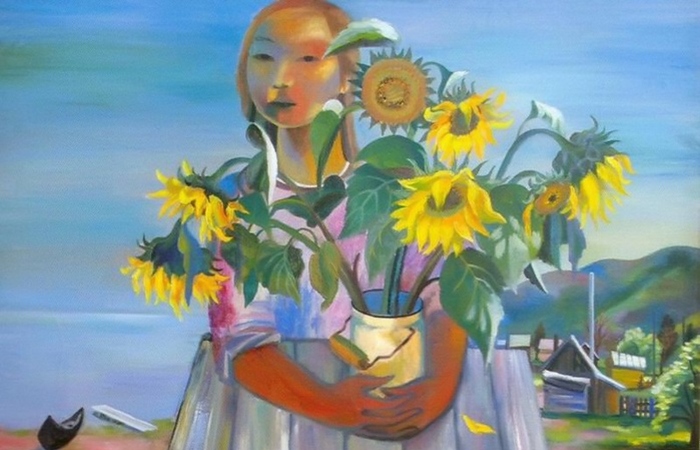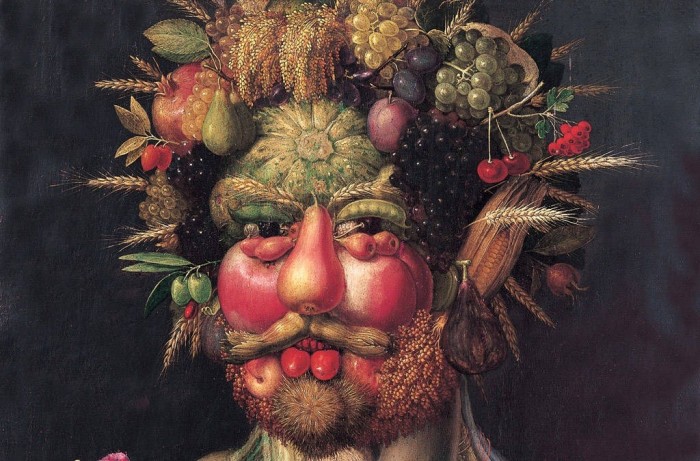VARIETIES OF GENRE STILL LIFE
 Still life (with FR. nature morte-dead, inanimate nature) – artistic depiction of various household items.
Still life (with FR. nature morte-dead, inanimate nature) – artistic depiction of various household items.
In the XV-XVI centuries still life was considered as part of a historical or genre composition. Early still lifes often performed a utilitarian function, for example, as a decoration of Cabinet doors or to mask a wall niche.
As an independent genre of painting still life was formed in the XVII century in the works of Dutch and Flemish artists.
The term nature morte (dead nature) appeared in the XVIII century and reflected a dismissive attitude to the still life by the academic community, which preferred the “high” genres, the area of which was “living nature” (historical, battle, allegorical, religious, mythological). Until the end of the XIX century still life was considered as a “lower” genre.
The heyday of still life painting is associated with the invention in the XIX century of the method of production of tube paints and the appearance of plein-air painting.All the objects in the Dutch still life are symbolic. Emblematic collections, published during the XVIII century., were a good tool in deciphering paintings.
In the paintings of Dutch artists XVII-XVIII Centuries. the bouquet is likened to human life.
Compositions for bouquets in the Dutch still life were of three types: radial composition (flower stems diverged fan from one point) the main image becomes a flower placed in the place of convergence of the stems. Compositions of the second type-flowers, like a carpet, fill the entire space of the canvas, while a vertical hierarchy of colors and their meanings is built. The third type of bouquet composition is a triangle figure – the most significant flower serves as the Central axis, and the other flowers are symmetrically grouped around it.
Niche in the still life-a symbol of the cave containing the Shrine and the presence of the deity.
Vanitas, Vanity of vanities (from lat. – vanity, vanity) – allegorical still life of the Baroque era, is the most intellectual kind of still life, requiring the viewer’s knowledge of the Bible and the traditions of religious symbolism.
Vanitas was a reminder of the transience of life, the futility of pleasure and the inevitability of death.
The greatest distribution of Vanitas got in Flanders and the Netherlands in the sixteenth and seventeenth centuries, some examples of the genre are found in France and Spain. The first extant still life Vanitas was painted by Jacob de Gein Jr. in the XVII century.
Symbolism of objects in Dutch still life:
skull-a reminder of the inevitability of death, symbolizes the frailty of human life;
bread-a symbol of the body of the Lord, combined with wine-the sacrament of the Eucharist;
bubbles-brevity of life and suddenness of death;
medical instruments-a reminder of the diseases and frailty of the human body;
purses with coins, jewelry boxes-a reminder of female beauty and attractiveness, at the same time they are associated with vanity, narcissism and the mortal sin of arrogance;
ruins-symbolize the transient life of those who inhabited them once;
weapons and armor-a symbol of power and might, the designation of what can not be taken with you to the grave;
crowns, papal tiaras, scepters and powers, wreaths of leaves – signs of transient earthly domination, which is opposed to the heavenly world order. Like masks, they symbolize the absence of those who wore them.
In the Eastern still life depict household and religious objects, symbols, ornaments and motifs of the East and Indochina.
The garland wrapped around the Central image resembled the famous symbol of Eternity – a snake coiled around a winged clock. In the garland itself were woven white lilies and ears of bread, traditionally associated with Christ or Mary and spoke of the purity of the glorified. In addition, many things here symbolized the seasons: flowers-spring, ears and fruits-summer, grapes and vegetables – autumn, lemons – winter.
Garlands are wrapped not only around portraits. Often it is a clock, a Eucharistic Cup, glasses of wine and even a cartouche with a text. Sometimes a small wreath is placed directly in the Cup.
Dutch still life of the XVII century is characterized by the narrow specialization of Dutch masters within the genre. The theme “Flowers and fruits” includes a variety of insects. “Hunting trophies” are, first of all, hunting trophies – broken bird and game. “Breakfast” and “Dessert” also includes images of fish and a variety of birds.
All the objects in the Dutch still life are symbolic. Emblematic collections, published during the XVIII century., were a good tool in deciphering paintings. In the paintings of Dutch artists XVII-XVIII Centuries. the bouquet is likened to human life. The symbols found on the canvases were intended to remind of the impermanence of human life and the instability of pleasures and achievements. All subjects were polysemantic, had secular and religious overtones.
Breakfasts (Desserts, Served tables, Banquets) – a kind of genre still life in the Dutch still life of the XVII century – the image of a set table with a modest set of items and household utensils.
The birthplace and center of this genre was Haarlem. One of the earliest Breakfast still lifes is Nicholas Gillis’s “Laid table” (1580-1632).
Initially, the set of items for the still life included: cheese, ham, buns, fruit and beer. With increasing demand from wealthy citizens in still lifes began to appear game, wine and pies (in those days the most expensive was a BlackBerry pie), and in addition to the traditional herring appeared lobsters, shrimp, oysters. Began to be used expensive dishes made of silver and Chinese porcelain, jugs, tazzi, knives, etc.
Kitchen still lifes became widespread in the Netherlands by artists Peter Artsen and Joachim Bekkelar.
In the kitchen still life, the mistress of the house, the cook or the servants moved to the background, and in the foreground were the kitchen utensils and brought to the kitchen meat, fish and many vegetables: pumpkin, turnips, rutabaga, cabbage, carrots, peas, beans, onions and cucumbers. Wealthier people had cauliflower, melons, artichokes and asparagus on the table.
The symbolism of dishes in the Dutch still life: glass-a symbol of fragility; porcelain-purity; silverware-the personification of wealth; mortar and pestle-signs of male and female sexuality;
bottle-a symbol of sin and drunkenness; broken dishes-a symbol of death; jug and bowl-a reminder of the Last supper;
inverted or an empty glass can mean emptiness or death, the glass is half full, means moderation;
the knife-a symbol of betrayal, a tool of torture-reminds of the vulnerability of man and his mortality-in addition, it is a hidden image of male sexuality.
The founders of the genre was Otto Marseus van Schrik (1619-1678) and Vithos Matthias (1627-1703).
Symbolism of animals, insects and birds in Dutch still life:
squirrel-hard work, without which earthly goods are impossible;
rabbit – ear, sensitivity, exuberance, shyness, fear;
crayfish or lobsters-wisdom, prudence, slowness;
parrot-likened to the righteous and symbolized eloquence, gratitude, or represented the believer;
birds, butterflies and various insects-signs of different stages of earthly life, the personification of the divine cycle, death and resurrection; fluttering butterfly-a symbol of the immortality of the soul, resurrection;
fish-early Christian symbol;
the living snail is the personification of the mortal sin of laziness. Large mollusks represent the duality of nature, a symbol of lust, one of the deadly sins;
overseas exotic shells-a collector’s item, hinted at a waste of money, as a symbol of Venus, a symbol of pilgrimage; clam shell is the remains of a once living animal, it also means death and mortality.
Still life in the landscape-still life image on the background of the landscape.
In still life, two genres of fine art are used in the landscape – the main role is assigned to the still life, and the landscape genre plays a supporting role.
Still life in the interior-still life image on the background of the interior of the room.
In still life, two genres of fine art are used in the interior – the main role is assigned to the still life, and the interior genre plays a supporting role.
Symbolism of objects in Dutch still life:
cups, playing cards or dice, chess-a sign of a mistaken purpose in life, the search for pleasure and sinful life; equality of opportunity in gambling meant also reprehensible anonymity;
the Smoking pipe is a symbol of fleeting and elusive earthly pleasures;
carnival mask-is a sign of the absence of man, irresponsible pleasure;
mirrors, glass balls – symbols of vanity, a sign of reflection, unreality;
keys-symbolize power, home;
mechanical or hourglass-a reminder of the transience of life.
The personification of the Dutch still life XVII – XVIII centuries-hunting still life. In Holland this genre was called Hunting trophies.



